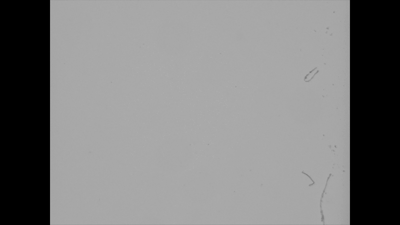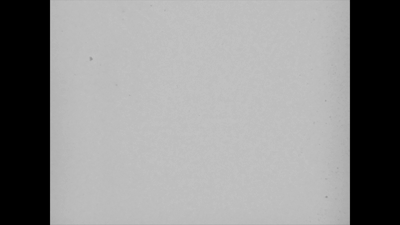Gustav Laabs and Lettre Becker
Claude Lanzmann was born in Paris to a Jewish family that immigrated to France from Eastern Europe. He attended the Lycée Blaise-Pascal in Clermont-Ferrand. His family went into hiding during World War II. He joined the French resistance at the age of 18 and fought in the Auvergne. Lanzmann opposed the French war in Algeria and signed a 1960 antiwar petition. From 1952 to 1959 he lived with Simone de Beauvoir. In 1963 he married French actress Judith Magre. Later, he married Angelika Schrobsdorff, a German-Jewish writer, and then Dominique Petithory in 1995. He is the father of Angélique Lanzmann, born in 1950, and Félix Lanzmann (1993-2017). Lanzmann's most renowned work, Shoah, is widely regarded as the seminal film on the subject of the Holocaust. He began interviewing survivors, historians, witnesses, and perpetrators in 1973 and finished editing the film in 1985. In 2009, Lanzmann published his memoirs under the title "Le lièvre de Patagonie" (The Patagonian Hare). He was chief editor of the journal "Les Temps Modernes," which was founded by Jean-Paul Sartre and Simone de Beauvoir, until his death on July 5, 2018. https://www.newyorker.com/culture/postscript/claude-lanzmann-changed-the-history-of-filmmaking-with-shoah From 1974 to 1984, Corinna Coulmas was the assistant director to Claude Lanzmann for his film "Shoah." She was born in Hamburg in 1948. She studied theology, philosophy, and sociology at the Sorbonne and Hebrew language and Jewish culture at Hebrew University in Jerusalem and INALCO in Paris. She now lives in France and publishes about the Five Senses. http://www.corinna-coulmas.eu/english/home-page.html RG-60.5025 Hidden camera interview with Gustav Laabs, who drove a gas van at Chelmno. Lanzmann is challenged by two neighbors after Laabs refuses to open the door to his apartment. Additional rolls contain industrial scenes and footage of a truck in transit. The truck was manufactured by the company Saurer, which also manufactured gas vans during the war. Multiple takes show Lanzmann reading a letter written by the engineer Dr. Becker in which Becker details the operation of a gas van. FILM ID 3824 -- Laabs CR#4-7 Maison Chelmno CR4 Germany filmed from the rear window of a moving vehicle. Cars drive. People stand on the sidewalk. A building at the side of the road says “MOBEL BODEN”. The car turns down another street. CR5 CU of a window with curtains. The camera tilts down, pans to the right on a brick wall, and left on another balcony with windows. WS building with a blue car parked in front. Lanzmann and Corinna walk on the street. Cut to leader. A man walks outside. INT of the car, Adidas box on the left. Lanzmann stands outside a door. Sign marked “G. Laabs”. Cut to leader [orange]. INT Lanzmann stands outside Laabs’ apartment. No one answers. Cut to leader. A man smoking walks by. A man and woman exit the door. CU building windows. A man in a blue sweater walks towards the building. He stops, looks back, and shrugs. A young boy sits in an open window of the building, he quickly hides. Cut to leader. Man in the blue sweater briefly talks [silent]. He walks toward the building. Lanzmann and Corinna walk away, they are both smiling. Another shot of the building through the car window. A boy rests in the window, and a young man stands below. A woman calls to her children through the door. Cut to orange. CR6 Lanzmann talks to a neighbor of Laabs, CUs. The man insists he does not know what Laabs did during the war, and that he does not really know him. Lanzmann continues to question him, and again the neighbor says he doesn’t know anything. Lanzmann tells him he killed 200,000 Jews and drove the gas van at Chelmno. He says he will call someone if they don’t stop filming. Lanzmann persists, asking what he thinks of these affairs in general. The man says he condemns them. They continue arguing. The conversation ends abruptly as Lanzmann says “goodbye”. Lanzmann and Corinna walk away. FILM ID 3293 (also called Film ID 3825) -- Coupe Image II Laab[s] II Fin Chelmno II Streets, houses, etc. shot from a moving car. The car pulls up outside of Laabs' house and Lanzmann (not on camera) reads from the indictment at the 1963 trial. CU on one window and balcony in the apartment building. Lanzmann and a women walk up to the building. Lanzmann stands outside a door labeled "G. Laabs." He rings the doorbell but there is no answer. In the next scene Lanzmann is challenged by two residents of the building, who tell him that he cannot film people who don't wish to be filmed. They say Mr. Laabs is a good neighbor. Lanzmann tells the two neighbors of Laabs that he drove a gas van during the war and murdered over 200,000 Jews. The woman turns her back to the camera and tells Lanzmann that if she sees herself on television she will get a lawyer. The man starts to tell Lanzmann that they are from the next generation. Lanzmann says that he has given them information about their neighbor. The woman tells Lanzmann to leave and they walk away. FILM ID 3383 -- CR#1,2,3,9,10 -- 01:00:08 to 01:23:20 View from inside a truck as Lanzmann's crew drives along a highway and industrial areas in Germany (Switzerland?). CUs of trucks. Multiple takes of Lanzmann reading engineer Dr. Becker's letter concerning the operation of the gas vans. The May 16, 1942 letter was addressed to Obersturmbahnfuehrer Walter Rauff, Central Security of the Reich in Berlin, in Kiev, Ukraine. Lanzmann reads the document in French and in German while inside the moving vehicle. Ends with recorded candid conversation in French. FILM ID 3384 -- CR#11,12,Breme 1 -- 02:00:08 to 02:29:05 Lanzmann's crew films trucks driving along a highway in Switzerland and at a truck rest stop. CUs, a blue "Saurer" truck. "Saurer" manufactured the trucks that were used as gas vans. They were made in Kiev, Simferopol, Minsk, Riga, and Kaunas from late 1941 to 1942. FILM ID 3385 -- Saurer 1,2,4 --03:00:09 - 03:02:40 CUs, a blue "Saurer" truck.
- EHRI
- Archief
- us-005578-irn1002784
- Film
- , Germany
- CHELMNO
Bij bronnen vindt u soms teksten met termen die we tegenwoordig niet meer zouden gebruiken, omdat ze als kwetsend of uitsluitend worden ervaren.Lees meer










